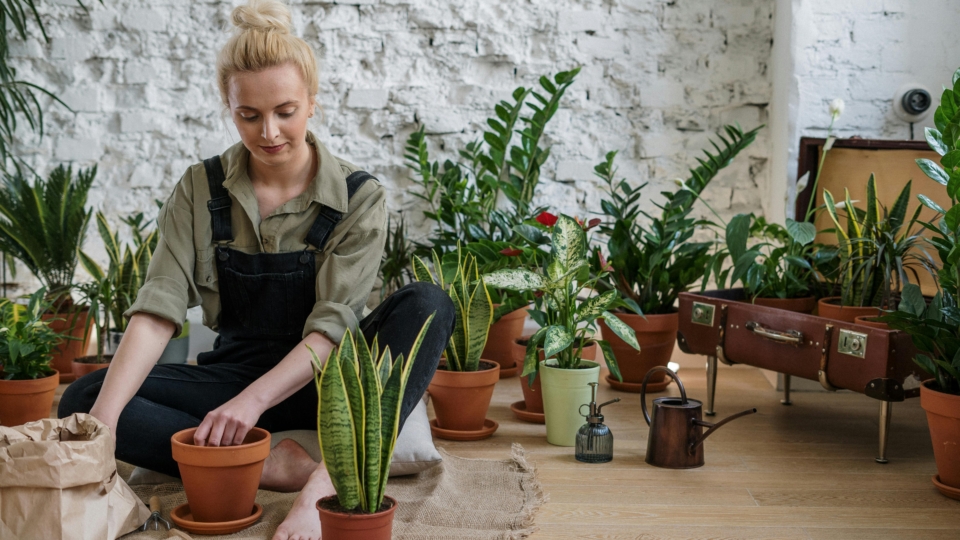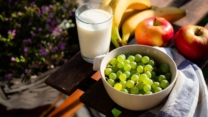
How to Grow Your Own Herb Garden
Benefits of Growing Your Own Herb Garden
Cultivating a personal herb garden offers several advantages. Fresh herbs provide superior flavor and nutrition compared to store-bought ones. Growing your own is more economical in the long run and reduces food waste, as you only harvest what you need. Herb gardens are also visually appealing, adding greenery and aroma to your space. Additionally, many herbs repel common pests and attract pollinators, supporting a healthy ecosystem around your home.
Choosing the Right Location
Selecting an optimal location ensures healthy herb growth and productivity.
Sunlight Requirements: Most herbs need 6-8 hours of sunlight daily. South-facing windowsills, balconies, patios, or a spot in your backyard work well. If growing indoors, select a sunny window or use grow lights to supplement natural sunlight.
Soil and Drainage: Use well-draining soil to prevent root rot. Raised beds, containers, or traditional in-ground gardens can all be suitable, as long as water drains efficiently.
Accessibility: Plant herbs where they’re easy to access. A kitchen windowsill or garden bed near the door lets you quickly snip fresh herbs while cooking.
Selecting Herbs to Grow
Choose herbs based on your climate, available space, culinary preferences, and maintenance commitment.
Beginner-Friendly Herbs:
- Basil: Prefers warmth and full sun; ideal for summer gardens.
- Mint: Vigorous and spreads quickly; best grown in containers to prevent invasiveness.
- Parsley: Grows in partial shade; available in curly and flat-leaf varieties.
- Thyme: Hardy and drought-resistant; pairs well in Mediterranean dishes.
- Chives: Perennial with a mild onion flavor; produces edible flowers.
- Cilantro (Coriander): Fast-growing; prefers cooler temperatures.
Variety in Your Garden: Alongside basics, consider less common herbs like dill, oregano, sage, rosemary, and tarragon to expand your culinary repertoire.
Starting from Seeds vs. Seedlings
Both seeds and nursery seedlings have their benefits.
Growing from seeds is cost-effective, offers greater variety, and is rewarding. Start seeds indoors 6-8 weeks before the last frost or direct sow after danger of frost has passed. Use seed trays, keeping soil moist until germination.
Seedlings are convenient and yield faster results. They are ideal for beginners or for slow-growing herbs like rosemary and sage. Transplant seedlings after hardening off to minimize shock.
Planting Methods
In-Ground Beds
For outdoor gardens, till soil to a depth of 8-12 inches. Mix in compost to improve fertility and drainage. Arrange herbs according to height, with taller varieties in the back and trailing species along the edges.
Container Gardening
Containers allow you to grow herbs in limited spaces and control soil quality. Use pots with drainage holes. Fill with a quality potting mix, and avoid garden soil, which can compact. Group herbs by similar water and sun needs for easier care.
Raised Beds
Raised beds offer warm, well-drained soil and are ideal for areas with poor native soil. Construct beds 6-12 inches deep. Fill with a mix of compost and potting soil for best results.
Indoor Herb Gardens
Place containers on sunny windowsills. Indoor herb kits are available for convenience. Supplement natural light with grow lamps, especially during winter or in low-light environments.
Soil Preparation and Fertilization
Good soil is the cornerstone of a thriving herb garden.
- Soil Type: Loamy, well-drained soil is best. Amend heavy clay or sandy soils with compost.
- Fertilizers: Most herbs do not require heavy feeding. Overfertilizing can reduce flavor intensity. Use organic fertilizers like fish emulsion, seaweed, or compost tea sparingly.
- Mulching: Apply a thin mulch layer (e.g., straw, coco coir, shredded bark) to retain moisture and suppress weeds.
Watering Your Herb Garden
Herbs require consistent but not excessive moisture.
- Watering Frequency: Water thoroughly when the top inch of soil feels dry. Seedlings need frequent, gentle watering; mature herbs tolerate drier conditions.
- Drainage: Ensure containers and beds drain well. Avoid letting plants sit in water, as this can cause root rot.
- Special Cases: Mediterranean herbs (e.g., rosemary, thyme, oregano) are drought-tolerant. Mint and parsley prefer more moisture.
Pruning and Harvesting
Proper harvesting techniques stimulate bushier growth and prolong productivity.
- Pruning: Regularly pinch back growing tips to encourage branching. Remove spent flowers to maintain leaf production, unless you want to collect seeds.
- Harvesting: Snip sprigs in the morning after dew dries but before the midday sun. Use sharp scissors or pruners to minimize plant stress. Always harvest up to one-third of the plant at a time to prevent stunting.
Pest and Disease Management
Maintain healthy herbs with organic and preventive methods.
- Common Pests: Aphids, spider mites, and whiteflies can appear. Spray pests off with water or use insecticidal soap as needed.
- Natural Solutions: Companion planting with pest-deterring herbs (such as basil or chives) helps protect vulnerable plants.
- Diseases: Ensure good air circulation to prevent fungal diseases. Avoid overhead watering, and remove infected plant material promptly.
Companion Planting in the Herb Garden
Combine herbs strategically to optimize growth and deter pests.
- Basil: Enhances the growth of tomatoes and repels aphids and mosquitoes.
- Chives: Discourage Japanese beetles and attract pollinators.
- Rosemary and Sage: Protect carrots and cabbage from certain insects.
- Mint: Deters ants and cabbage moths, but keep it contained due to invasive roots.
Seasonal Care and Maintenance
Adjust herb garden care throughout the year for continued success.
- Spring: Plant seeds or seedlings after frost. Begin regular feeding and mulching.
- Summer: Water deeply but less frequently. Harvest often for peak flavor.
- Fall: Cut back perennials and bring tender herbs (like basil) indoors before frost.
- Winter: Overwinter hardy perennials outdoors with mulch protection. Move potted herbs indoors or to a protected porch; provide grow lights if needed.
Common Growing Challenges
Leggy Seedlings: Caused by insufficient light. Move plants to a sunnier spot or use supplemental lighting.
Bolting: When herbs flower and go to seed prematurely, their flavor can diminish. Harvest leaves regularly and provide adequate water to reduce stress.
Slow Growth: Often a result of poor soil or lack of sunlight. Fertilize lightly or relocate to a brighter area.
Harvesting and Preserving Herbs
Enjoy fresh herbs throughout the growing season and preserve the bounty for later use.
- Fresh Use: Harvest just before use to maximize flavor. Rinse and pat dry.
- Drying: Tie sprigs in small bundles and hang upside-down in a warm, ventilated area out of direct sunlight. Once dry, strip leaves and store in airtight containers.
- Freezing: Chop herbs and freeze in ice cube trays with water or olive oil for convenient portions.
- Infusing: Create flavored oils and vinegars by immersing clean, dried herbs in the liquid for several weeks.
Creative Herb Garden Ideas
Vertical Gardens: Use wall planters, hanging baskets, or stacked pots if space is limited.
Herb Spirals: Build a spiral-shaped raised bed to create microclimates for various herbs.
Windowsill Planters: Grow a mini herb garden indoors for year-round harvests.
Themed Gardens: Designate sections for Mediterranean, tea, or medicinal herbs to suit your interests.
Maximizing Herb Yield and Quality
- Succession Planting: Sow quick-growing herbs like cilantro and basil every few weeks for continuous harvest.
- Staggered Harvests: Rotate which plants you pick from to allow for regrowth.
- Pinching Blossoms: For leaf herbs, pinch flower buds to prolong leaf production.
Safe and Sustainable Practices
- Organic Methods: Avoid synthetic pesticides and fertilizers. Opt for compost, organic mulches, and natural pest control.
- Water Conservation: Install drip irrigation or collect rainwater to minimize water use.
- Pollinator-Friendly: Allow some herbs (e.g., chives, basil) to flower to attract bees and butterflies.
By following these steps, you can create a productive and beautiful herb garden that supplies your kitchen with fresh, aromatic, and flavorful herbs year-round.














Leave a Reply